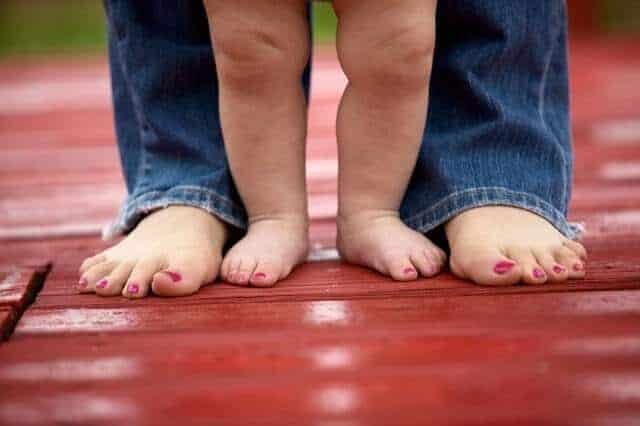A University of Iowa study confirms what many women have long suspected—that pregnancy permanently changes the size and shape of their feet.
Flat feet are a common problem for pregnant women. The arch of the foot flattens out, possibly due to the extra weight and increased looseness (laxity) of the joints associated with pregnancy. The new study, published in the March issue of the American Journal of Physical Medicine & Rehabilitation, suggests that this loss of arch height is permanent.
“I had heard women reporting changes in their shoe size with pregnancy, but found nothing about that in medical journals or textbooks,” says Neil Segal, UI associate professor of orthopaedics and rehabilitation. “In order to study this more scientifically, we measured women’s feet at the beginning of their pregnancy and five months after delivery. We found that pregnancy does indeed lead to permanent changes in the feet.”
The UI study followed 49 pregnant women and collected static and dynamic arch measurements during the first trimester of pregnancy and again about five months after childbirth. The researchers found that for about 60 to 70 percent of the women in the study, their feet became longer and wider.
Specifically, the study showed that, on average, arch height and measures of arch rigidity decreased significantly from early pregnancy to five months after childbirth, causing corresponding increases in foot length (between 2 and 10 mm) and arch drop. However, no significant change in the distribution of foot pressure was detected. The study also suggested that first pregnancies may account for most of the observed changes, while second, third, or higher pregnancies may not further alter foot structure.
“We know that women, and especially women who have had children, are disproportionately affected by musculoskeletal disorders,” says Segal, who also is an associate professor of radiology and epidemiology at the UI, as well as director of the Clinical Osteoarthritis Research Program. “It is possible that these foot changes that occur during pregnancy may help explain why, in comparison with men, women are at higher risk for pain or arthritis in their feet, knees, hips, and spines.”
Segal plans further studies to assess whether these foot changes lead to health problems, like arthritis, later in life. He also is conducting studies of how women’s musculoskeletal health can be protected during pregnancy.
In addition to Segal, the research team included Elizabeth Boyer; Patricia Teran-Yengle; Natalie Glass; Howard Hillstrom; and John Yack. The study was funded in part by grants from the American Geriatrics Society and the National Institute on Aging.

